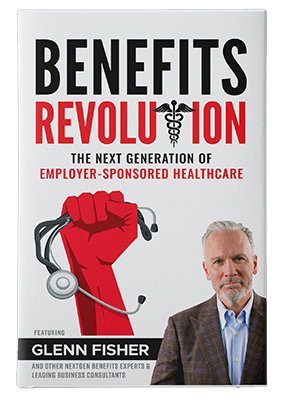
Stop-loss insurance is an essential component of many employer-sponsored health plans, particularly for self-funded organizations. It acts as a safety net to protect businesses from catastrophic claims that exceed a set threshold, ensuring that unexpected health-related costs don’t threaten the financial stability of the company. However, as with any insurance product, fees and commissions are involved, and understanding how to handle these costs is crucial to maximizing value and minimizing unnecessary expenses.
In this post, we will explore the different types of fees and commissions involved with stop-loss insurance, strategies for managing them, and how employers can ensure they are getting the best deal for their company.
Before diving into strategies for managing these costs, it’s important to have a clear understanding of the fees and commissions associated with stop-loss insurance.
With these different costs in mind, how can employers best navigate and handle these fees to get the most value from their stop-loss insurance?
One of the first steps in effectively managing stop-loss insurance fees is to demand full transparency from your broker. Some brokers operate under a commission-based model, while others may charge flat fees for their services. Both models have their pros and cons, but employers should always know how their broker is compensated.
– Commission-based brokers are typically incentivized to place clients with higher-cost policies, as this increases their earnings. Employers should be wary of this potential conflict of interest and request full disclosure of all commissions being earned from the insurance provider.
– Fee-based brokers charge a flat fee for their services, regardless of the cost of the insurance policy. This can provide a more transparent pricing structure, as the broker’s earnings are not tied to the policy’s premium.
In either case, it’s important to regularly review your broker’s fees and commissions to ensure they remain competitive and reasonable.
Employers often assume that the fees and commissions associated with stop-loss insurance are set in stone, but that’s not always the case. In fact, many fees can be negotiated. This is particularly true if your company has a strong claims history or if you’re considering bundling your stop-loss insurance with other employee benefits.
– Broker Commissions: Depending on the size of your company and your relationship with your broker, you may be able to negotiate a lower commission percentage. Alternatively, you could consider switching to a fee-based broker if you feel that commissions are driving up your costs unnecessarily.
– Administrative Fees: Ask for a breakdown of any administrative fees associated with your stop-loss insurance policy. If you’re paying for services you don’t need, it may be possible to eliminate or reduce these fees. It’s also worth considering whether a third-party administrator (TPA) could provide similar services at a lower cost.
Stop-loss insurance isn’t a “set it and forget it” product. The needs of your business and workforce can change over time, and your stop-loss coverage should be reviewed annually to ensure it continues to provide the appropriate level of protection.
Stop-loss insurance isn’t a “set it and forget it” product. The needs of your business and workforce can change over time, and your stop-loss coverage should be reviewed annually to ensure it continues to provide the appropriate level of protection.
During your annual review, evaluate the following:
– Deductibles: Are your deductibles set at the right level? Higher deductibles can lower your premium, but they also increase the financial risk to your company. Find the right balance between risk and cost.
– Coverage Limits: Do your current coverage limits reflect your company’s financial situation and risk tolerance? If your company has grown significantly or experienced a major change in its claims history, it may be time to adjust your stop-loss coverage.
– Carrier Relationships: Are you satisfied with your stop-loss carrier’s performance? If not, consider going out to bid to see if other carriers can offer more competitive pricing or better service.
Employers should leverage data analytics and technology to help manage their stop-loss insurance. Many self-funded employers use data-driven platforms to track employee health trends, claims, and other key performance indicators. This data can be used to negotiate better terms with insurance carriers and brokers.
By analyzing past claims data, employers can get a better sense of their risk exposure and use this information to make more informed decisions about deductibles, coverage limits, and premiums.
Finally, if your broker is not providing the level of expertise or service you need, consider working with an independent consultant who specializes in stop-loss insurance. A consultant can provide objective advice, help you navigate complex fee structures, and negotiate on your behalf to ensure you get the best possible terms.
Fees and commissions are an unavoidable part of purchasing stop-loss insurance, but employers can take steps to manage these costs effectively. By demanding transparency, negotiating where possible, evaluating coverage annually, leveraging data, and working with knowledgeable advisors, employers can ensure they’re getting the most value for their stop-loss insurance dollar. In the long run, this can lead to more effective cost containment and greater financial stability for their health plan.
Take control of your health plan strategy today with our free plan assessment.
Health Plan Analyzer provides a comprehensive plan assessment that identifies key opportunities based on 20-years of analyzing of employer-sponsored health plans.
FRAMEwork creates a blueprint for employers that includes strategies and solutions that have been validated by from some of leading brands in America.
By levering Health Plan Analyzer and the FRAMEwork it equips employers to break free from the status quo, reduce risk, and optimize their health plan — saving 20-40%.
Use these tools as your guide to empower your trusted team—advisor, consultant, legal team, plan administrator and fiduciary committee—towards a better health plan.
Start building a high-performance strategy now!
Get your free copy here.

Note: If you don’t see an email from joe.bush@navmd.com in your email inbox within a minute or two, check your junk or spam folder.